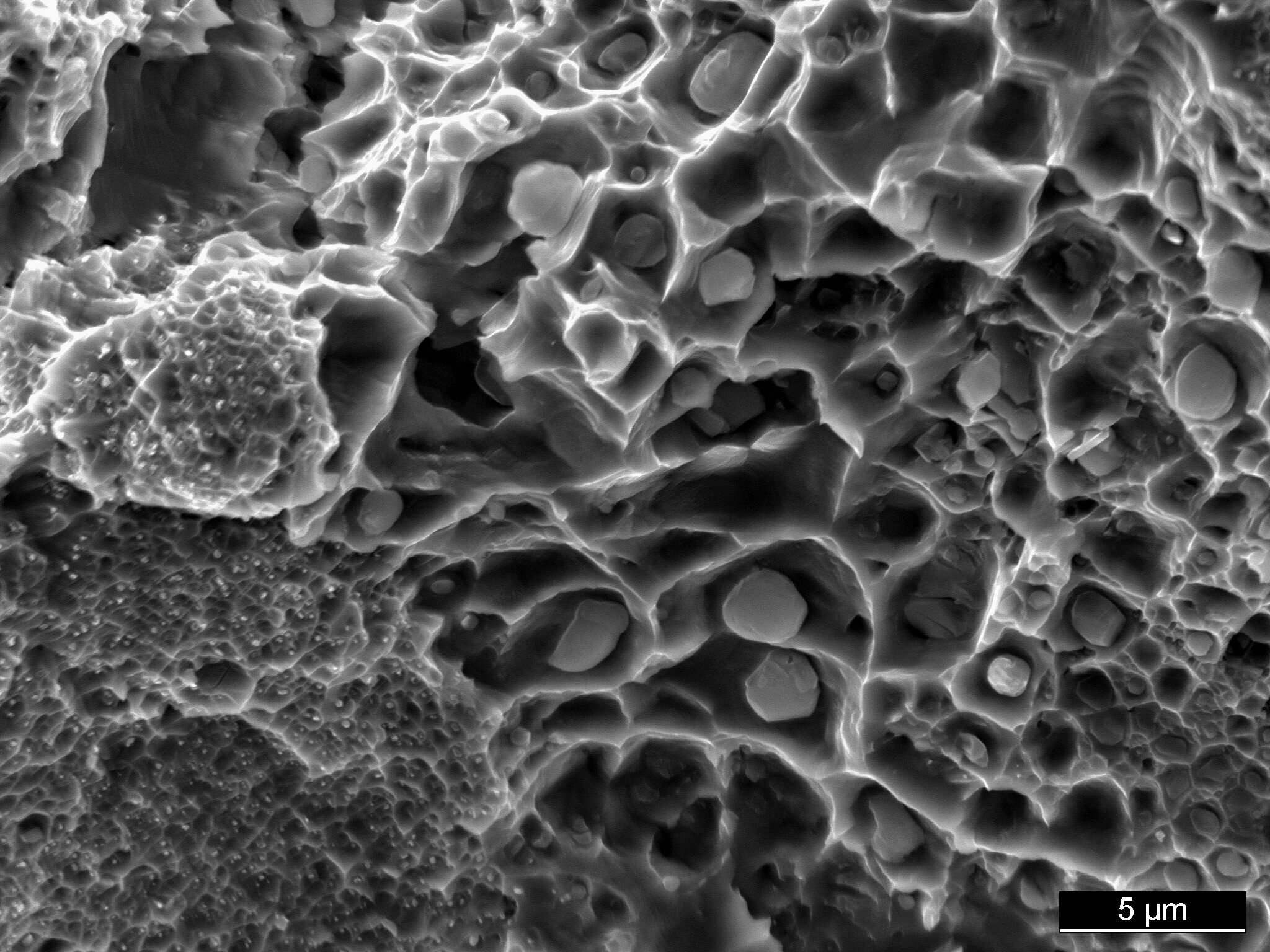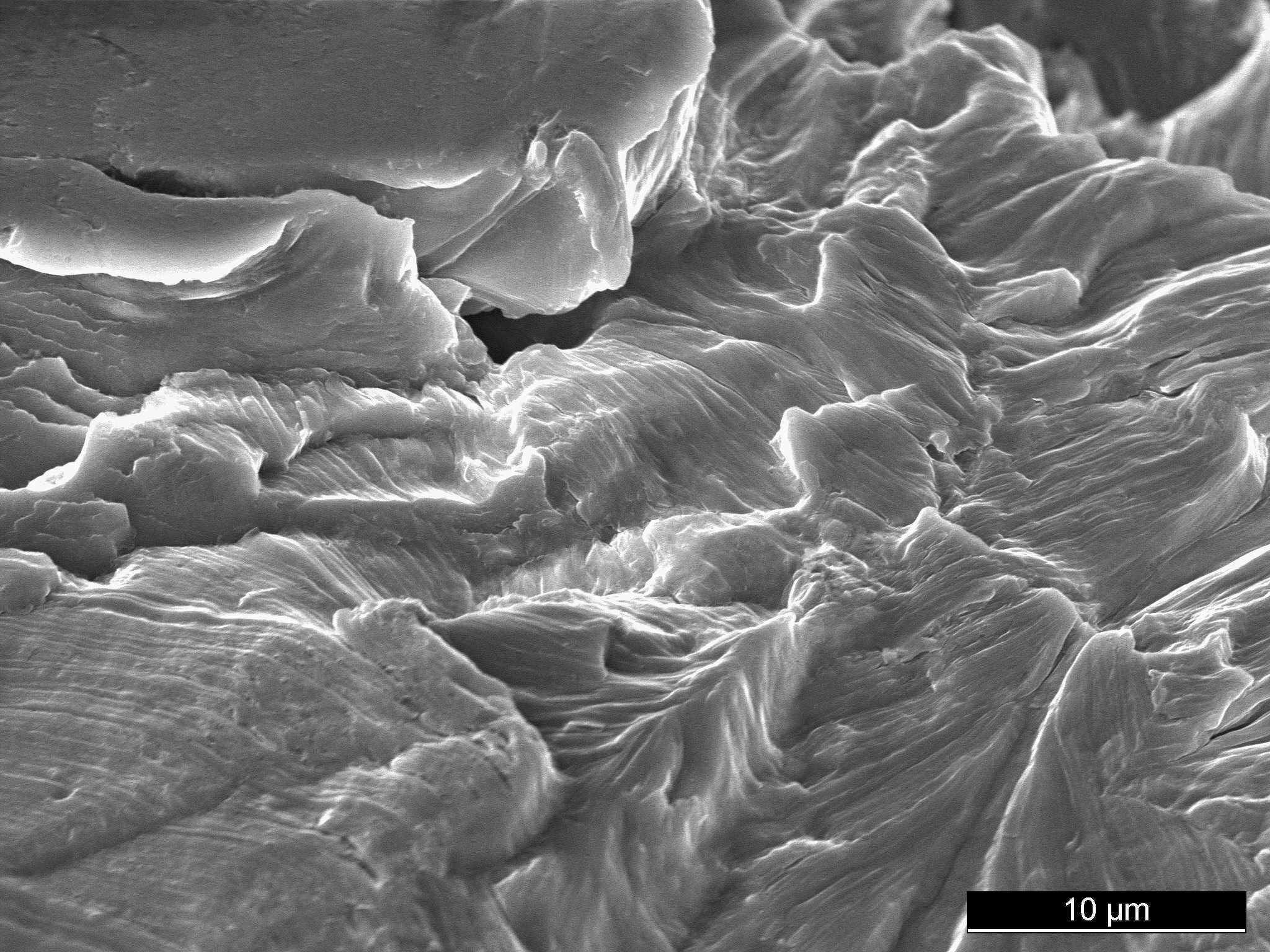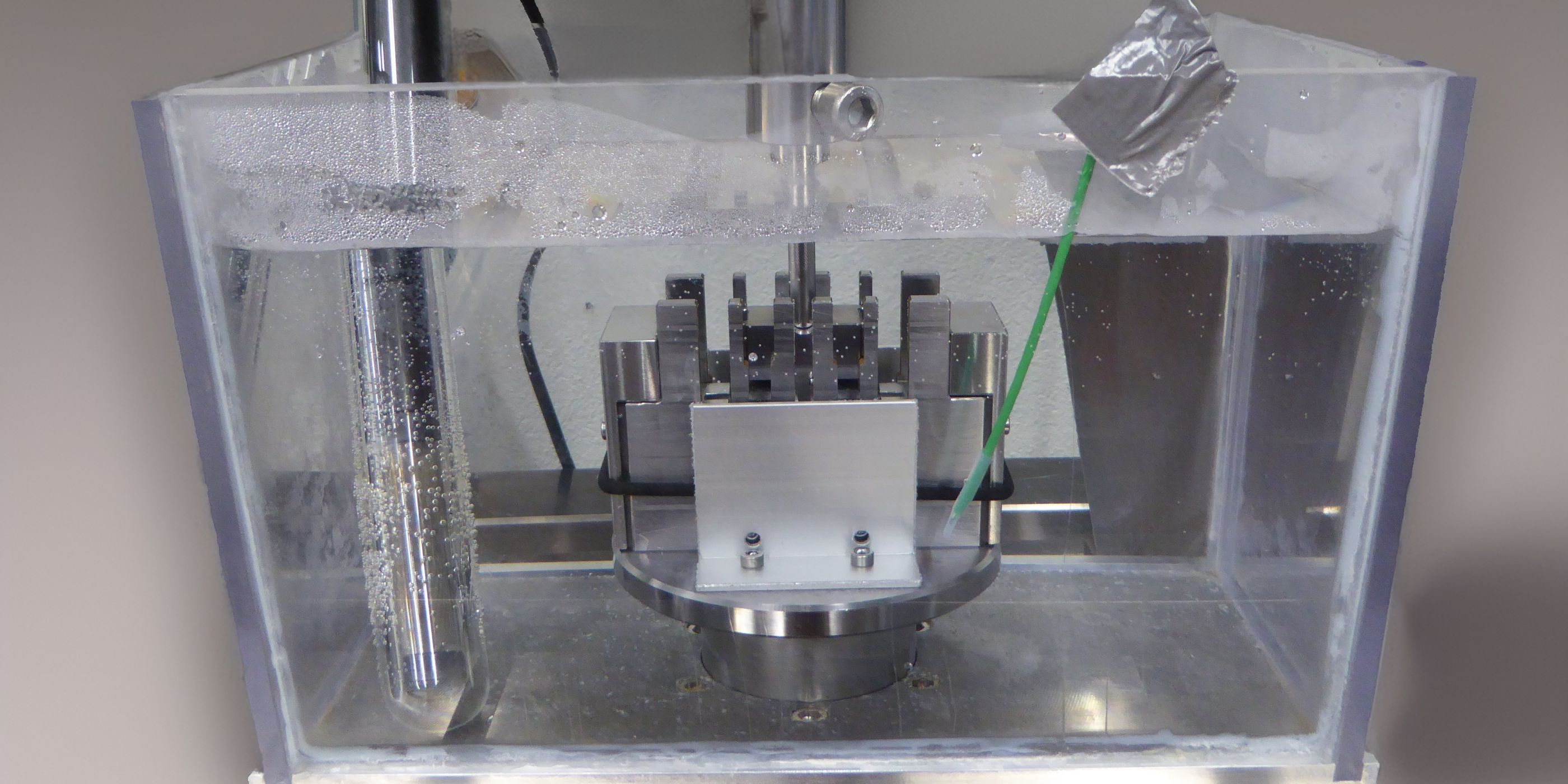IL-4: Chemical surface analysis with XPS
What are those stains on the product? How clean is the surface? Why does the coating come off again and again? Was the plasma treatment effective?
X-ray photoelectron spectroscopy helps to answer such questions. This analytical method allows for the determination of the chemical composition in the top 5-10 nm of the surface.
The X-ray photoelectron spectroscopy, short XPS, utilises the photoelectrical effect (figure 1): X-rays are used to excite the electrons in a material so strongly that they leave their atom and the sample surface as well. The energy of the released photoelectrons is measured and hence their binding energy calculated. This permits to determine qualitatively the elements close to the surface plus their binding states.
![]()
Figure 1: Operating scheme of an XPS spectrometer.
Chemical composition of the surface
An XPS analysis is usually started by acquiring a survey spectrum of a wide energy range in order to identify the elements close to the surface (figure 2). The depicted spectrum of polyethylene terephthalate (PET) reveals the presence of oxygen and carbon.
The acquisition of detailed spectra allows for more precise information about the binding states of the present elements (figure 2, top right). The chemical environment of an atom influences the binding energies of the electrons. Thus applying a peakfitting of the detailed spectra allows determining the binding states of the atoms. For example sulphates can be distinguished from sulphides or oxidised titanium from metallic titanium, whereas the later can be used to determine the thickness of the titanium dioxide layer. The depicted detailed spectrum of carbon includes four different peaks: A main peak of the carbon in the aromatic ring (blue), as well as two smaller peaks of carbon bound to one oxygen atom (green) and of carbon of the carboxylate C(=O)-O groups (red). In addition, a satellite caused by the aromatic rings is present (light blue).
![]()
Figure 2: Chemical structure, survey and detailed spectra of polyethylene terephthalate (PET).
Imaging-XPS
The lateral distribution of the elements on the surface can be mapped using imaging-XPS. A spectrum is acquired at each point of a surface . Imaging-XPS permits an exact localisation of features of interest, impurities, contaminations, or it can be used to check the quality of patterns. Figure 3 shows the light microscopic picture and two corresponding XPS images of a laser marking on a passivated implant steel. The iron/chromium distribution (centre) shows that on the marking there is significantly more iron present than on the unmarked place. The iron on the laser marking is fully oxidised, as shown by the figure on the right.
![]()
Figure 3: Light microscopic picture of a laser marking on a passivated implant steel (left). In a section (blue frame), imaging-XPS was used to determine the elemental distribution of iron and chromium (centre) as well as the percentage of metallic and oxidised iron (right).
Our XPS equipment:
Since 2025: PHI Genesis 500 from Physical Electronics / ULVAC-PHI (before: Kratos Axis Nova)
Detection:
All elements except hydrogen and helium.
The detection limit is approximately 0.1 at%, which corresponds to about 1 ng/cm2 on a surface.
Options:
- Angle resolved XPS:
Analysis of tilted samples to determine the depth distribution in the top 10 nm. - Depth profiling:
Applying argon ion sputtering to analyse the depth profile between 10 nm and 1 µm. - Imaging XPS:
Chemical map with the distribution of elements or oxidation states
Preset Values:
- Materials:
Vacuum-resistant, metallic and non-metallic solids and powders. - Dimension:
Sample diameter of max. 80 mm; height of max. 20 mm, larger samples can be cut. - Sample Handling:
Ideally, the samples are not touched by hand and packed in common aluminium foil for the transportation.


